Chelsea Lee
Experience Designer
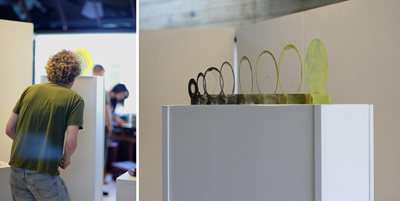
Viewer interacting with one of my books at my senior design exhibition
Primary design concentration:
Graphic Design and User Experience
Most preferred tools for designing:
Pencil and Paper
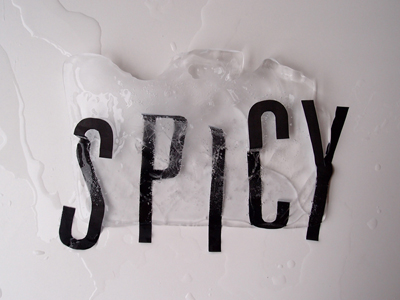
Experimental piece from my daily design project
How and why did you choose to become a designer?
I wouldn’t say that I really chose to become a designer, I think it’s just kind of who I am, however, high school is where I got my first real taste of graphic design.
My sister had taken a graphic design class where she got to make her own band tees, naturally, I thought that would be cool, so I signed up. I found myself in a place where I could tap into my creativity, and I was fortunate to have an incredible teacher who really pushed me to pursue design further. He saw something that I didn’t know was there, and gave me the tools and support I needed to create a portfolio and apply to schools.
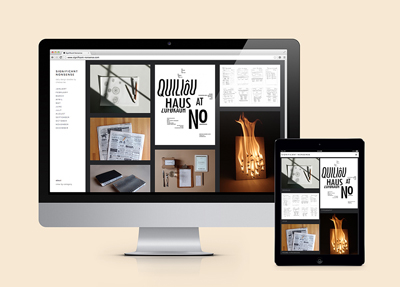
Website for my daily design project, Significant Nonsense
What are some of the challenges you encounter as a designer and how do you deal with them?
I’m a perfectionist; it’s my weakness and my strength. I tend to get caught up in the details and waste a lot of time fussing over them. As designers, we typically don’t want to share our work until it’s at a point that we’re satisfied with, but if we wait too long and spend valuable time flushing out the details, it becomes harder to go back and make changes. We become married to these designs, and undoubtedly, it becomes difficult to move away from them.
On January 1, 2013, I started a daily design blog where I challenged myself to create something every day for 365 days. Early on, I felt self-conscious about sharing the work; it was frustrating to put things out there that I wasn’t totally satisfied with. Eventually, I accepted this as part of the process, and the dissatisfaction, that I sometimes felt when I hit ‘post,’ propelled me to work harder the next day. Now as I look back at this Significant Nonsense, I appreciate each day’s piece for what it is: an experiment.
It’s very easy to get caught up in the details, but a collaborative process where you show and talk through rough ideas, really does lead to the best final product.
What is your definition of an “elegant solution,” that is, good design?
Good design is something that works. Whatever the product, be it a poster or website, it must suit the needs of the audience.
In college, I focused on handmade design, now my focus is mostly digital, but what I have since gathered is that regardless of the medium, design is universal. The fundamentals carry over into every type of design.
The goal of my senior degree project was to create several artist books in which each was assembled to support a word. All aspects of the book supported this conceptual word, however, the word never appeared in the book. The viewer was filled with the sense of the word through thoughtfully chosen text, materials, binding method, color, etc.
In order to achieve this, I had to control the viewer’s experience. With printed books, the designer controls the color, materials, font size, etc., and the user has no option to change those. You can’t fully control how they perceive the book, however, we can conduct research and make design decisions in order to get the idea across to the widest audience.
With digital, you just have to accommodate for more variables. The designer has to additionally think about screen sizes, resolution, varying browsers and devices, also, that the user has the ability to customize and adjust things like font size.
Everyone has a slightly different way of experiencing the same thing. And that’s a beautiful aspect of design. You can never fully control how a product will exist in space, but we strive to give it the flexibility it needs to exist in a way that is accessible to the widest possible audience.
From skills to values, what makes a designer successful?
Working your ass off. Solutions do not land in your lap, you need to get out there and find them. You have to work through problems, and try tons of different things before you land on that perfect solution. I always find that when I’m the most exhausted, fed up and irritated, and not wanting to work anymore, that’s when I find the solution.
How do you stay motivated and grow personally and professionally as a designer?
The Chicago design community is pretty amazing, when I first moved to the city, I found my way into the AIGA Chicago Mentor Program. The suggestions and advice I received from the group were very helpful, but it was also just a great way to meet like-minded people and learn about the city.
Through my involvement with the Mentor Program and by attending various design events, I have met some of the most incredible and talented people I know. These people have become my good friends, and we support and motivate one another.
Over the years, I’ve compiled an email list of people I’ve met who like to hang out after events or work. It turned into what I call “design drinks etc.” Basically, it’s just-after-work drinks; sometimes we talk about design things and/or vent about our jobs, mostly it’s about catching up with friends, nevertheless I always leave laughing and feeling better about what I’m doing with my life.
For those aspiring to become a designer, whatever the discipline, what is your advice?
Surround yourself with talented people. Set goals. Do personal projects. Work your ass off.
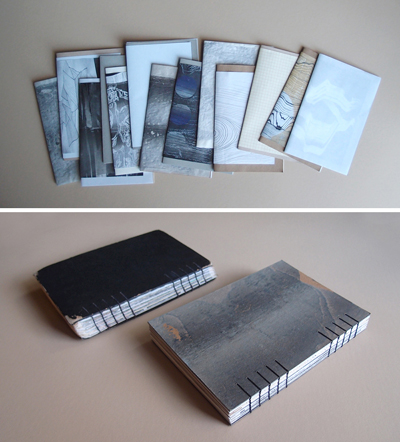
My handmade sketch/notebooks filled with all kinds of paper: graph, tracing, monotypes, etc.
What is your quest in design, from a professional practice, education or evolution standpoint?
To take what I’ve learned everyday, in every aspect of my life, and apply that knowledge to my designs. To keep challenging myself, pushing myself out of my comfort zone, and learning new things.
Previous: Tonya Douraghy | Next: Kate Pociask
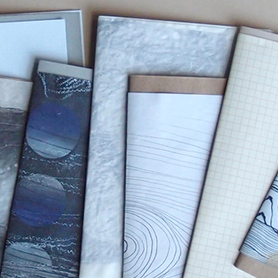
Support this solo initiative
What began as a collection of links has evolved into a comprehensive archive committed to creative culture—offering so far 395 interviews with under-the-radar Artists, Designers & Makers, in addition to 202 write-ups across events, books, movies, more. Free to explore. Free from ads. If you gain a level of motivation, knowledge, even delight, from Design Feast, please support on Patreon. Thanks for your consideration!
Wishing you continual success,
Nate Burgos, Content Creator & Publisher
Comments
There are no comments yet.
Leave Your Comment